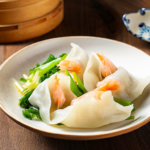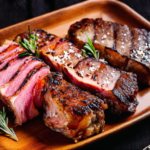Fluffy Cloud Croissants: The Ultimate Bakery Delight
Introduction to Fluffy Cloud Croissants
Welcome to the world of culinary delights, where we explore the art of baking and uncover the secrets behind creating perfect pastries. Today, we dive into the realm of croissants, specifically focusing on Fluffy Cloud Croissants. These are not your ordinary croissants; they are a testament to the skill and dedication of the baker. With their light, airy texture and delicate layers, these croissants are a true indulgence. In this article, we will guide you through the process of making these delectable treats from scratch, ensuring that every step is clear and accessible for both novice and experienced bakers alike.
The Importance of Ingredients
The foundation of any great pastry lies in its ingredients. For fluffy cloud croissants, it’s essential to choose high-quality flour, butter, yeast, and milk. The flour should be unbleached all-purpose or bread flour, which provides the structure necessary for the dough to rise properly. Butter, the star ingredient, must be unsalted and of good quality to ensure the croissants have a rich flavor. Yeast, whether instant or active dry, plays a crucial role in the fermentation process, giving the croissants their signature lightness. Lastly, milk adds moisture and enhances the flavor profile, contributing to the overall taste experience.
The Art of Shaping Croissants
Shaping croissants is an art form that requires precision and patience. Begin by rolling out the dough into a large rectangle, then folding it into thirds like a letter. This process, known as lamination, creates the flaky layers that make croissants so special. After several rounds of rolling and folding, the dough is chilled to firm up the butter and prevent it from melting during baking. Once chilled, the dough is rolled thin and cut into triangles. The edges of each triangle are then stretched and rolled into crescent shapes, with the wide end tucked under to form the traditional croissant shape. Proper shaping ensures that the croissants maintain their form during baking and achieve their iconic fluffiness.
Baking Techniques for Perfect Croissants
Baking techniques play a vital role in achieving perfectly golden and flaky croissants. Preheating the oven to the correct temperature is crucial, as it ensures even cooking. For fluffy cloud croissants, a moderate heat around 375°F (190°C) works best. Before placing the croissants in the oven, brush them lightly with egg wash to give them a glossy finish. Baking time varies depending on the size and thickness of the croissants, but typically ranges between 15-20 minutes. It’s important to rotate the tray halfway through baking to ensure even browning. Once baked, remove the croissants from the oven and let them cool slightly before serving. This allows the steam to escape and prevents sogginess.
Serving Suggestions and Pairings
Fluffy cloud croissants can be enjoyed in various ways, either plain or filled with different fillings. They pair wonderfully with fresh fruit jams, Nutella, or a simple dusting of powdered sugar. For a savory twist, try filling them with prosciutto and arugula or smoked salmon and cream cheese. Additionally, these croissants make an excellent base for breakfast sandwiches, providing a soft yet sturdy vessel for eggs, bacon, and other toppings. Their versatility makes them a favorite among food enthusiasts, whether enjoyed solo or as part of a larger meal.
Conclusion
In conclusion, mastering the art of making fluffy cloud croissants is a rewarding endeavor that showcases the baker’s skills and creativity. By carefully selecting high-quality ingredients, meticulously shaping the dough, and employing precise baking techniques, you can create croissants that are truly worthy of the name “fluffy cloud.” Whether you’re a seasoned baker or just starting out, these steps will guide you toward producing croissants that are not only visually appealing but also deliciously satisfying. Happy baking!
FAQs
- What type of flour should I use for croissants?
Unbleached all-purpose or bread flour is recommended for croissants, as it provides the necessary structure for the dough to rise properly. - How do I know when the croissants are done?
Croissants are ready when they are golden brown and sound hollow when tapped on the bottom. - Can I freeze croissants?
Yes, you can freeze unbaked croissants by wrapping them tightly in plastic wrap and storing them in the freezer. To bake, simply thaw and proceed with the recipe as usual.
References
This article draws on knowledge from professional baking techniques, including the principles of laminated dough and the science behind yeast fermentation. For more information, consult reputable baking books or online resources dedicated to pastry arts.


